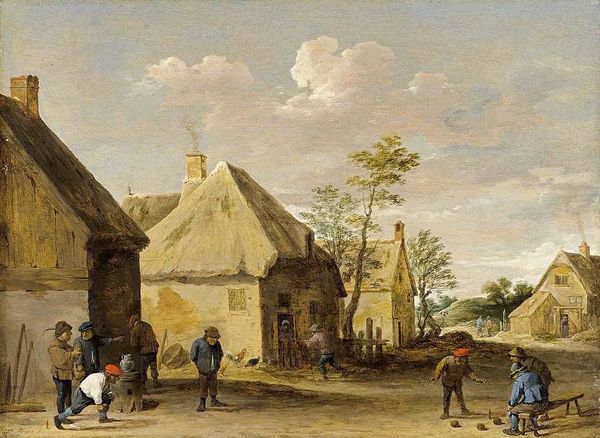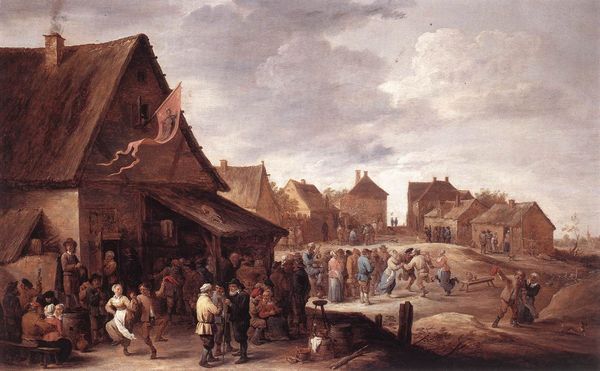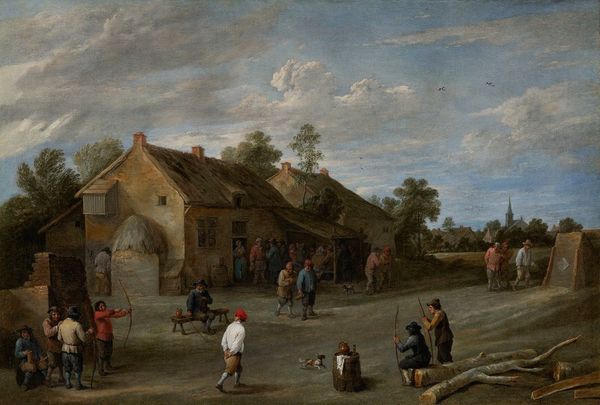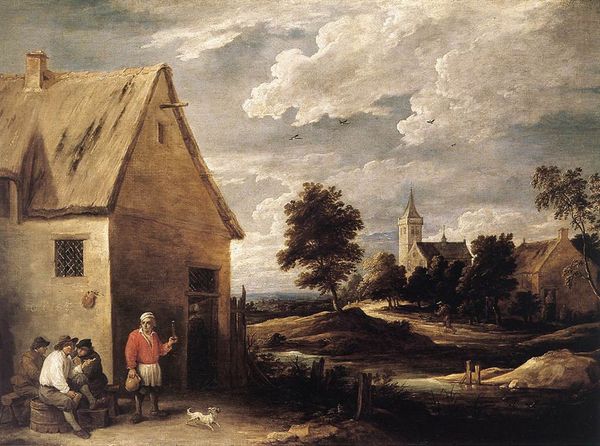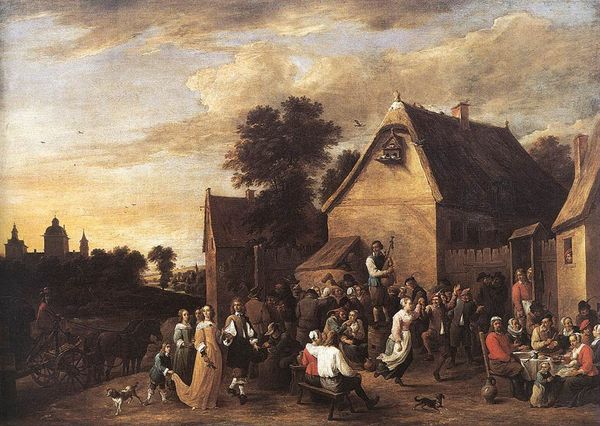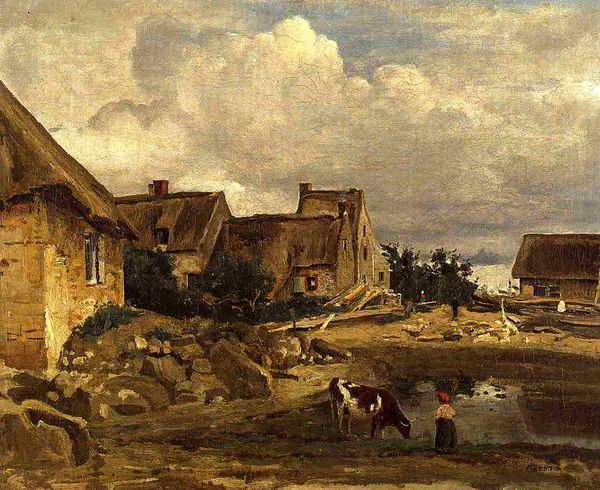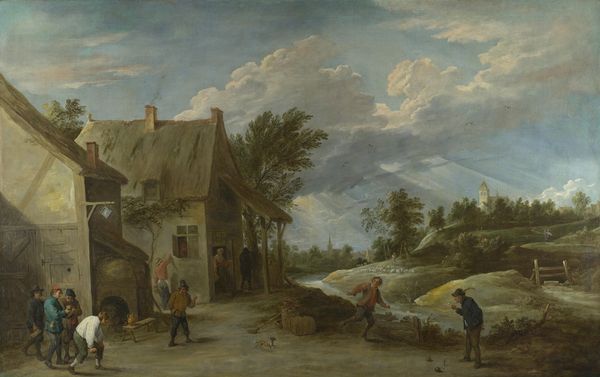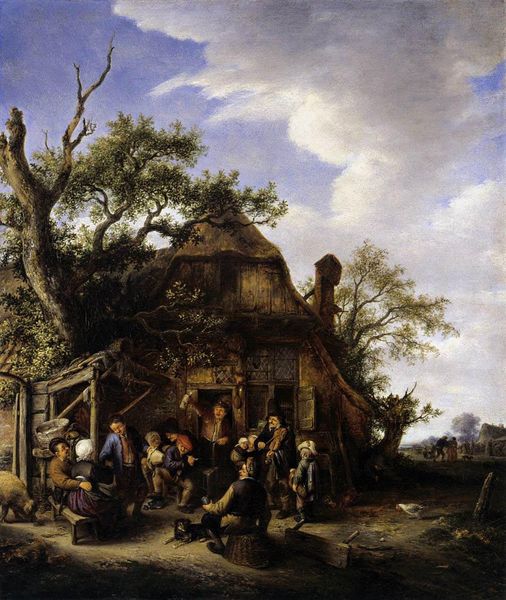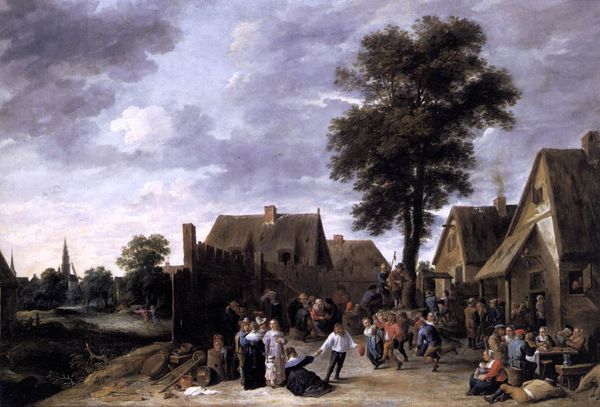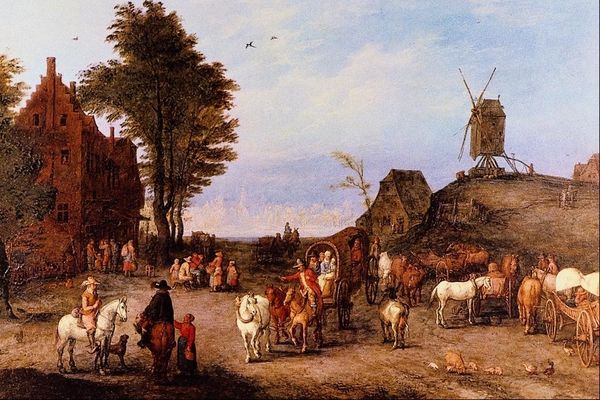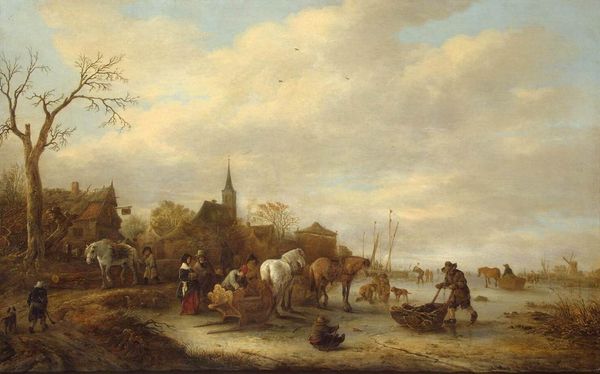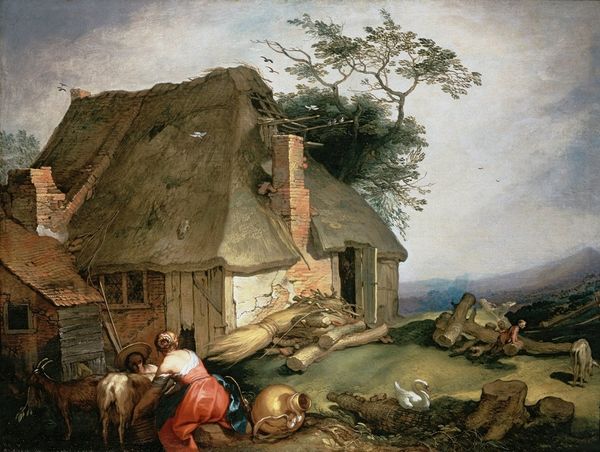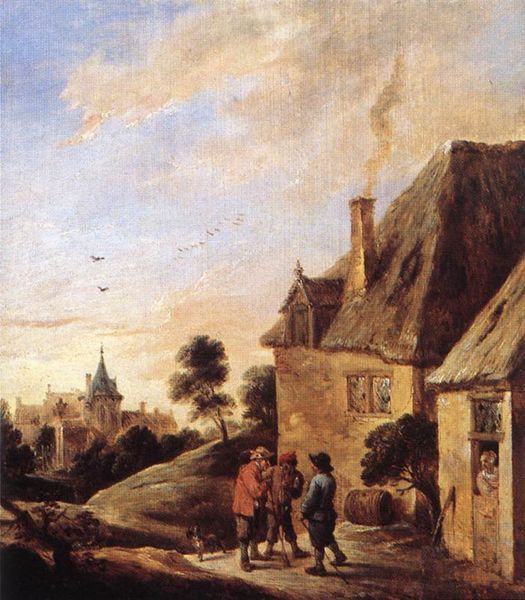
painting, plein-air, oil-paint
#
portrait
#
animal
#
rural-area
#
painting
#
plein-air
#
oil-paint
#
landscape
#
house
#
oil painting
#
derelict
#
romanticism
#
horse
#
painting painterly
#
genre-painting
#
realism
Copyright: Public domain
Curator: Camille Corot's "A Farm in the Nievre," painted in 1831, is a quintessential example of early 19th-century French landscape painting executed en plein air. Editor: My first impression is that the overall palette is quite muted. There's a subdued harmony created by the browns and greens; it gives a quiet, unassuming feel, almost melancholic. Curator: Observe how the light delicately falls across the thatched roofs and the open field. Corot meticulously balances the horizontals of the land with the verticals of the buildings and trees. Editor: Yet this careful balancing act seems to mask a stark reality. The rural-area looks a bit desolate, right? It speaks volumes about labor and perhaps even class in the 1830s. We see figures engaged in manual tasks near quite basic housing. The artist depicts genre-painting in very direct terms, making visible this reality. Curator: Undoubtedly, this work reflects an emergent realism, an interest in observing scenes directly. Corot's approach avoids idealization, but notice the structural integrity: each form, from the horses to the smallest stones, is rendered with precision, creating a coherent pictorial space. Editor: The horse for instance— it anchors a narrative of working-class rural life, alongside the family by the water’s edge. It underscores the critical relationship between labor, nature, and the human condition. This isn’t just pretty scenery. Curator: While context certainly informs our reading, I urge you to appreciate the pure compositional balance that Corot achieves here through the masterful control of tonal variation. The gradations evoke a sense of calm and stasis in their masterful placement on the canvas. Editor: For me, it’s impossible to ignore the painting's socio-economic dimension— the farm stands as a poignant representation of early 19th-century life for the vast majority. The figures aren’t just picturesque elements; they embody a life intertwined with land and work. Curator: In short, "A Farm in the Nievre" allows one to reflect on a simpler visual scheme. Editor: While providing important social reflections on labor and community.
Comments
No comments
Be the first to comment and join the conversation on the ultimate creative platform.
